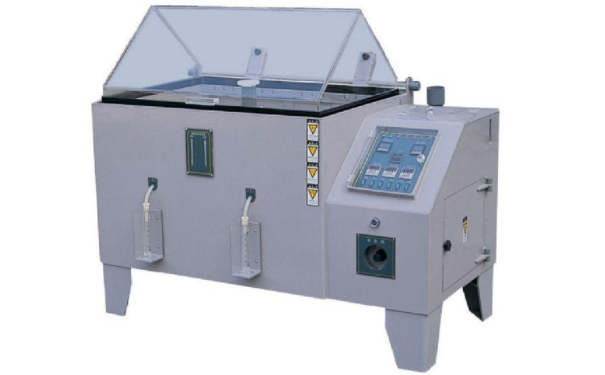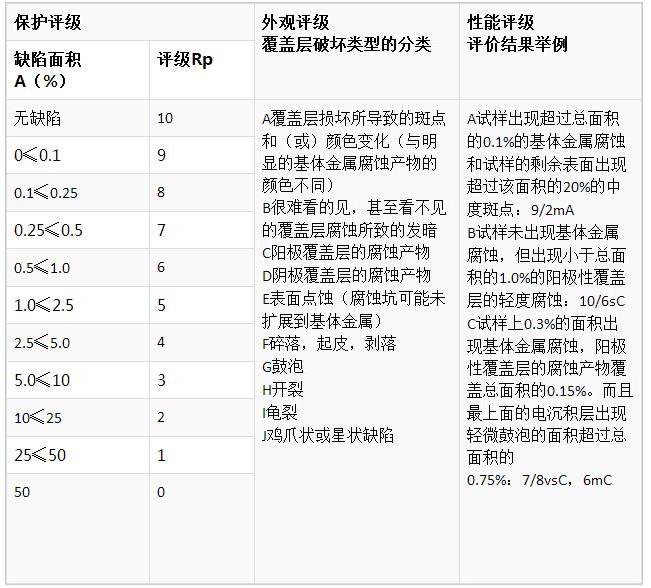How to choose the appropriate salt spray test? What are the criteria for rating?
Date:2022-04-28 14:36:53 Views:4984
Salt spray test is an important test to evaluate the corrosion resistance of products. It mainly uses the artificial simulated salt spray environmental conditions created by salt spray test equipment to evaluate the corrosion resistance of products or metal materials. In order to help you have an in-depth understanding, this paper will summarize the relevant knowledge of salt spray test. If you are interested in what this article will cover, read on.
Salt spray corrosion is one of the most common and destructive atmospheric corrosion. It is divided into two categories, one is artificial accelerated simulated salt spray environmental test, the other is natural environmental exposure test. Among them, the artificial simulated salt fog environment test is to use a test equipment with a certain volume space - salt fog test chamber, and use the artificial method to create the salt fog environment in its volume space to evaluate the salt fog corrosion resistance and quality of products. Compared with the natural environment, the salt concentration of chloride in the salt spray environment can be several times or dozens of times of the salt spray content in the general natural environment, which greatly improves the corrosion speed. The time to obtain the results of salt spray test on products is also greatly shortened. If a product sample is tested in the natural exposure environment, it may take 1 year to be corroded, while similar results can be obtained in 24 hours under the artificial salt spray environment.

Artificial simulated salt spray test includes neutral salt spray test, acetic acid salt spray test, copper accelerated acetic acid salt spray test and alternating salt spray test, as follows:
1. Neutral salt spray test (NSS test)
At present, it is the most widely used and widely used artificial salt spray test. Generally, it uses sodium chloride aqueous solution with pH between 6.5~7.2 and concentration of 50g/l ± 5 g/l as the spray solution. The test temperature is 35 ℃± 2 ℃, and the average settlement rate of 80cm2 horizontal area is required to be 1.5ml/h ± 0.5ml/h. Generally speaking, the 24-hour neutral salt spray test is about the same as the corrosion of the product in the natural environment one year later, but the artificial accelerated simulation test is still different from the natural environment, so it can not be completely replaced.
2. Acetic acid salt spray test (AASs test)
Developed on the basis of neutral salt spray test. It is to add an appropriate amount of glacial acetic acid to the 50g / L ± 5g / L sodium chloride solution to make the pH value of the solution 3.1 ~ 3.3. Its corrosion rate is about three times faster than that of neutral salt spray test.
3. Copper accelerated acetic acid salt spray test (CASS test)
A rapid salt spray corrosion test developed recently abroad, the test temperature is 50 ℃± 2 ℃, and 0.26g/l ± 0.02g/l copper chloride (CuCl2 · 2H2O), i.e. 0.205g/l ± 0.015g/l anhydrous copper chloride, is added to the 50g / L ± 5g/l sodium chloride solution. Its corrosion rate is about 8 times that of neutral salt spray test.
4. Alternating salt spray test
A comprehensive salt spray test, which is actually a neutral salt spray test plus a constant damp heat test. Use 5% sodium chloride solution as spray solution, spray it for 2h at 15 ℃ ~35 ℃, and then transfer the sample to a damp heat box for storage. The storage conditions are: temperature (40 ± 2) ℃, relative humidity (93 ± 3)%, forming a cycle. Different severity levels are achieved through different cycle times and storage time.
The salt spray test standard is divided into ten levels, which is based on the enterprise test standard and conforms to the actual situation. The specific classification and phenomenon of salt spray test standard are as follows.
Grade 10: no defect area, appearance rating A, no change in sample surface appearance;
Grade 9: the defect area accounts for no more than 0.1%, the appearance rating is B, and there is slight to moderate discoloration on the sample surface;
Grade 8: the defect area accounts for 0.1% ~ 0.25%, the appearance rating is C, the sample surface is seriously discolored or has very slight corrosion;
Grade 7: the defect area accounts for 0.25% ~ 0.5%, and the appearance is rated as d. There are very slight corrosion products on the surface of the sample due to serious light loss fire;
Grade 6: the defect area accounts for 0.5% ~ 1.0%, the appearance rating is e, the sample surface is seriously tarnished, or there is a thin layer of corrosion products or pitting corrosion on the local surface of the sample;
Grade 5: the defect area accounts for 1.0% ~ 2.5%, and the appearance rating is F. there are corrosion products or pitting corrosion on the sample surface, and one of them is distributed on the whole sample surface;
Grade 4: the defect area accounts for 2.5% ~ 5%, the appearance rating is g, and there is a thick corrosion product layer or pitting on the sample surface;
Grade 3: the defect area accounts for 5% ~ 10%, and the appearance rating is h. There is a very thick corrosion product layer or pitting corrosion on the sample surface, and there is deep pitting corrosion;
Grade 2: the defect area accounts for 10% ~ 25%, the appearance rating is I, and the sample has corrosion of base metal;
Level 1: the defect area accounts for 25% ~ 50%, which is a serious corrosion phenomenon.
Judgment standard of salt spray test grade





 Weixin Service
Weixin Service

 DouYin
DouYin
 KuaiShou
KuaiShou





















